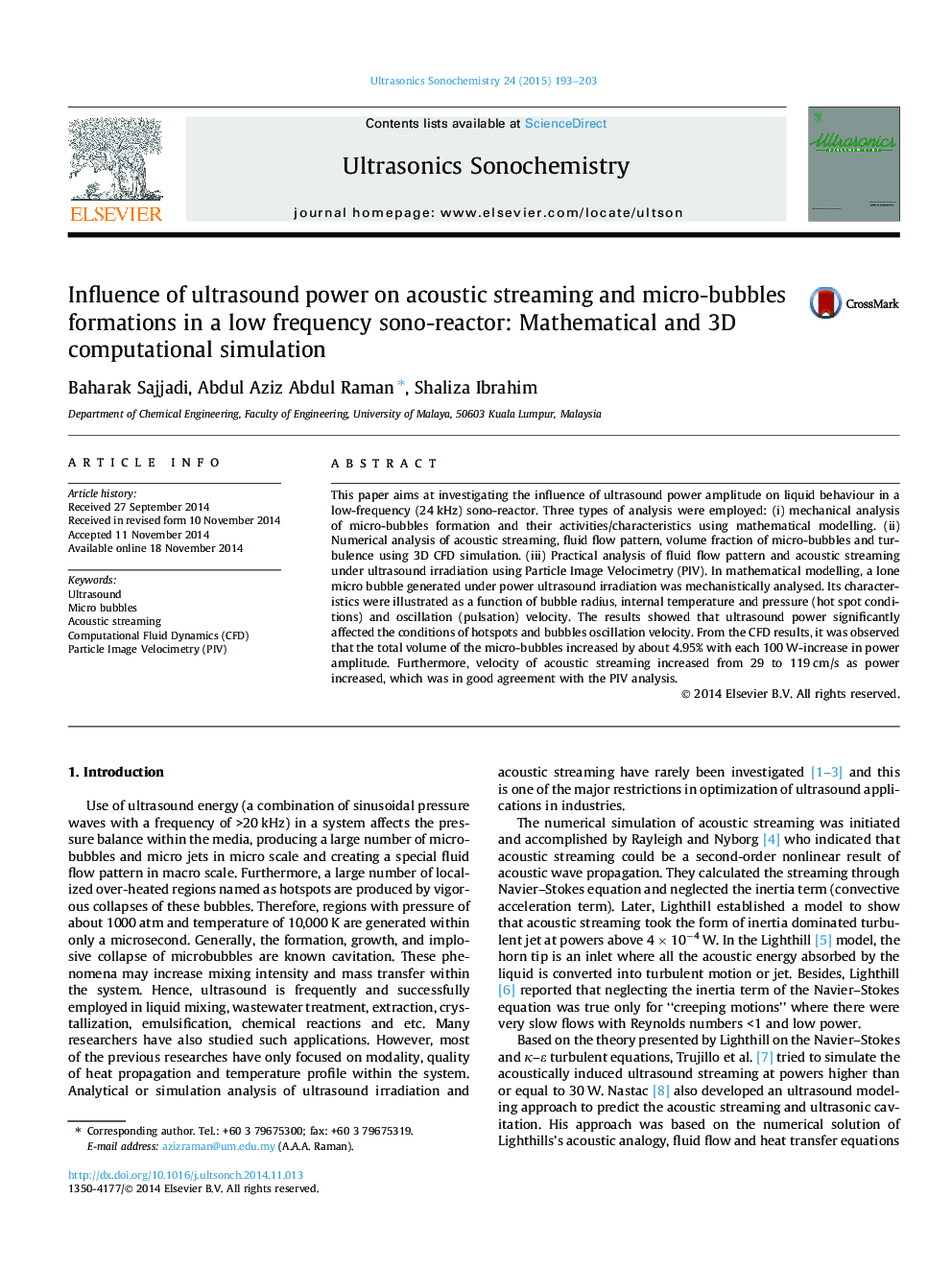| Article ID | Journal | Published Year | Pages | File Type |
|---|---|---|---|---|
| 1266713 | Ultrasonics Sonochemistry | 2015 | 11 Pages |
•Micro-bubbles were mechanistically analyzed/characterized using mathematical modeling.•Their equilibrium radius, oscillation velocity, hot spot conditions were investigated.•Acoustic streaming, fluid flow pattern, turbulence were analyzed using 3D CFD.•Total volume fraction of micro-bubbles was also analyzed by 3D CFD.•Fluid flow pattern and acoustic streaming were practically analyzed using PIV.
This paper aims at investigating the influence of ultrasound power amplitude on liquid behaviour in a low-frequency (24 kHz) sono-reactor. Three types of analysis were employed: (i) mechanical analysis of micro-bubbles formation and their activities/characteristics using mathematical modelling. (ii) Numerical analysis of acoustic streaming, fluid flow pattern, volume fraction of micro-bubbles and turbulence using 3D CFD simulation. (iii) Practical analysis of fluid flow pattern and acoustic streaming under ultrasound irradiation using Particle Image Velocimetry (PIV). In mathematical modelling, a lone micro bubble generated under power ultrasound irradiation was mechanistically analysed. Its characteristics were illustrated as a function of bubble radius, internal temperature and pressure (hot spot conditions) and oscillation (pulsation) velocity. The results showed that ultrasound power significantly affected the conditions of hotspots and bubbles oscillation velocity. From the CFD results, it was observed that the total volume of the micro-bubbles increased by about 4.95% with each 100 W-increase in power amplitude. Furthermore, velocity of acoustic streaming increased from 29 to 119 cm/s as power increased, which was in good agreement with the PIV analysis.
